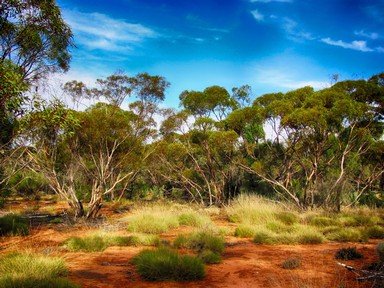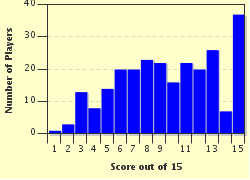Quiz Answer Key and Fun Facts
1. This species of bowerbird is found in woodland or rainforest along the east coast of Australia. The male makes a U-shaped bower and adorns it with blue objects such as feathers, flowers and even clothes pegs to attract females.
2. This bird is able to mimic many sounds like the calls of other birds, dogs barking and even car noises. It also has a beautiful, long, pheasant-like tail.
3. This bird uses its long, red, chisel-shaped bill to feed on mollusks and other animals in the intertidal zones of rocky or sandy beaches.
4. Aboriginal legend has a tale of an Aboriginal dancer, Baralga, who was changed into a bird which is famous for its 'dancing' displays, in which it bows, prances and flings sticks or grass into the air. What is this bird?
5. This is a large ground bird living in grassland and woodland ares it is commonly referred to as a bush turkey. However, it is probably related to the cranes and not a turkey. Which bird is it?
6. During the 55 or so days when the male emu incubates the eggs, he does not eat, drink nor defecate.
7. The eerie, wailing cries of what mainly nocturnal, ground dwelling bird may be heard at night from woodland and grass areas?
8. This bird has a red fleshy forehead comb and a black crown. Their huge feet and claws allow them to walk on floating vegetation in shallow lakes in which they live.
9. Which of the following birds has a shrill, ear-piercing whistling call?
10. This is Australia's only sunbird. The male has a metallic blue coloured throat and the female has a bright yellow coloured one.
11. This is the only stork found in Australia. It has a glossy dark green and purple neck, a massive black bill and black and white body plumage.
12. What is Australia's smallest bird?
13. This is a small, active bird which has a distinctive reddish brown rump and continuously fanned tail.
14. Which of these birds is distinguished by a long neck and head with a distinctive black double crest?
15. This duck is Australia's largest. The male is decorated with a large bulbous lobe of skin hanging under his bill. The female also has a much-reduced lobe on the underside of its bill. It gets its name from the strong scent that is produced from a gland on the rump.
Source: Author
meifeng
This quiz was reviewed by FunTrivia editor
crisw before going online.
Any errors found in FunTrivia content are routinely corrected through our feedback system.


